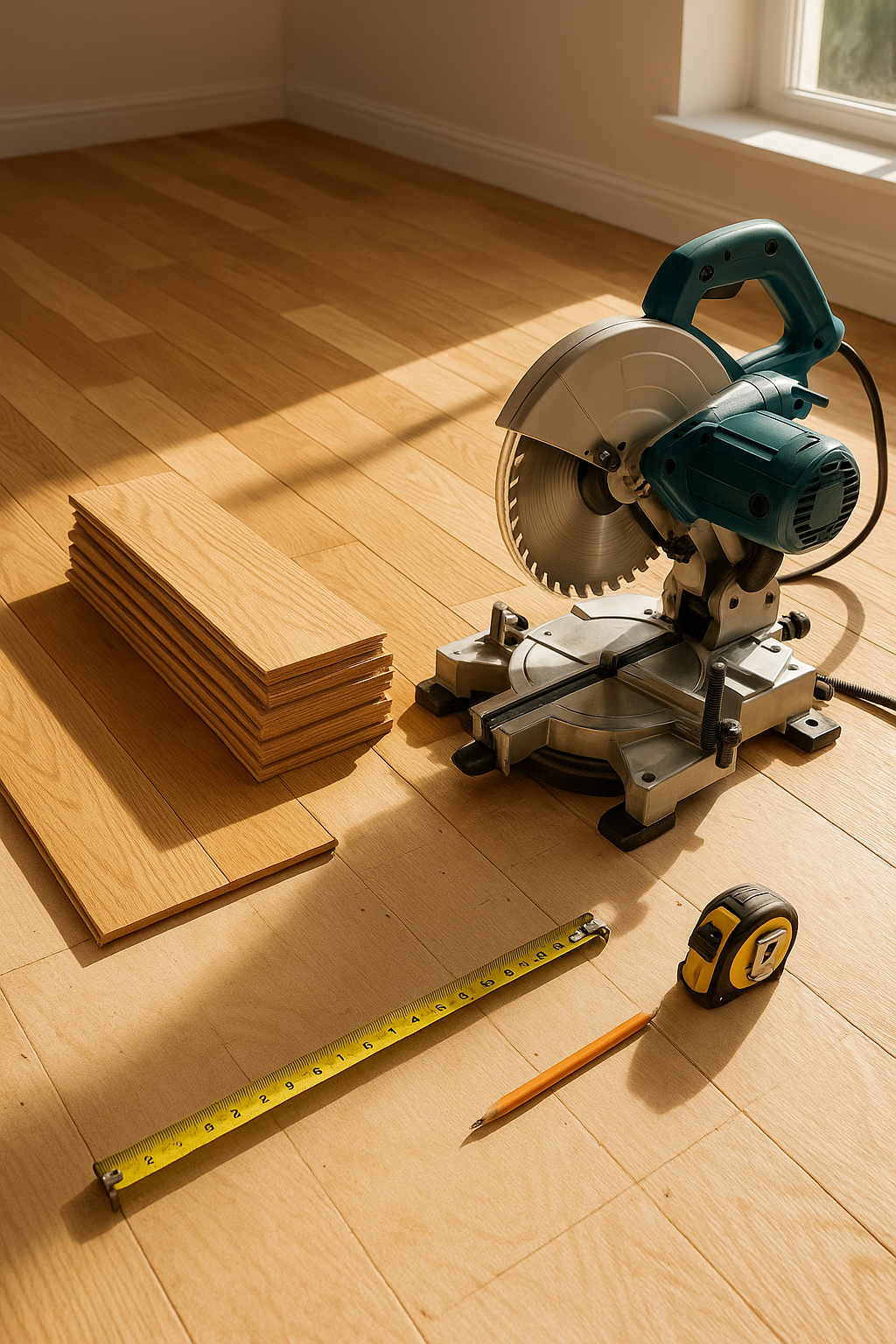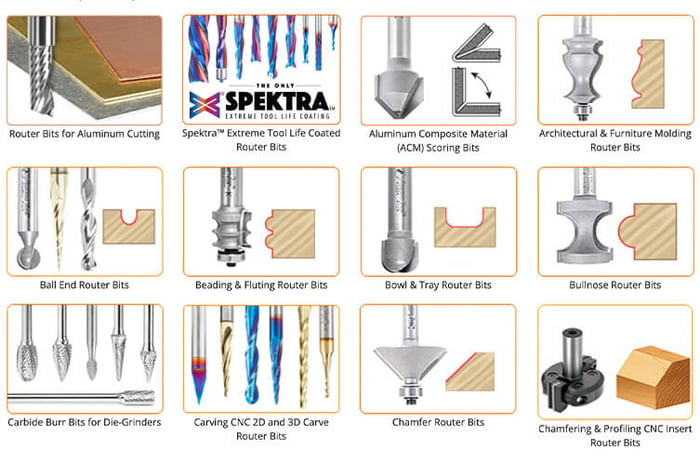Are you ready to bring your woodworking ideas to life but not sure which tool to use for cutting shapes in wood? Choosing the right tool can make all the difference between a smooth, precise cut and a frustrating, rough edge.
Whether you’re crafting a simple decoration or a detailed piece, the tool you pick will shape your experience and your final result. You’ll discover the best tools to cut shapes in wood, how to use them, and tips to get perfect cuts every time.
Let’s help you take your woodworking skills to the next level.
Types Of Wood Cutting Tools
Cutting shapes in wood needs the right tools. Each tool fits certain tasks and skill levels.
Knowing about different wood cutting tools helps you pick the best one for your project.
Hand Saws
Hand saws are simple tools with a sharp blade and a handle. They cut wood by moving the blade back and forth.
They work well for straight cuts and small projects. They do not need power, so you can use them anywhere.
Jigsaws
Jigsaws have a small blade that moves up and down. They cut curves and shapes in wood easily.
- Good for detailed cuts
- Portable and light
- Use different blades for wood types
- Can cut thick or thin wood
Scroll Saws
Scroll saws have a thin blade that moves quickly. They cut very fine and detailed shapes.
They are best for craftwork and intricate patterns. You place the wood on a flat table while cutting.
Router Tools
Routers use a spinning bit to cut or hollow out wood. They shape edges and create designs.
| Feature | Use |
| Fixed Base | Flat cuts and edges |
| Plunge Base | Start cuts inside wood |
| Variable Speed | Control cutting depth |
Laser Cutters
Laser cutters use focused light to burn wood. They cut very clean and precise shapes.
These tools work well for thin wood and detailed designs. They need electricity and safety gear.

Credit: www.califloors.com
Criteria For Choosing A Cutting Tool
Choosing the right tool to cut shapes in wood is important. The tool affects how smooth and accurate your cuts will be.
Different tools work better for different projects. You should think about your needs before picking one.
Precision And Accuracy
Precision means how close the cut is to the desired shape. Accuracy means cutting the shape exactly as planned.
Choose tools that offer good control and sharp blades. This helps make clean and exact cuts.
Ease Of Use
Tools that are easy to hold and control reduce mistakes. They also help you work longer without tired hands.
Look for lightweight tools with simple controls and good grips. This makes cutting shapes easier for beginners.
Material Compatibility
Wood types vary in hardness and grain. Some tools work better on soft wood, others on hardwood.
Check if the tool can handle the wood you plan to cut. This avoids damage to both wood and tool.
- Softwood: pine, cedar
- Hardwood: oak, maple
- Plywood and MDF
Budget Considerations
Cutting tools come at different prices. Some are affordable, others cost more but last longer.
Decide how often you will use the tool. Buy one that fits your budget and meets your needs.
| Tool Type | Price Range | Use Frequency |
|---|---|---|
| Manual Hand Saw | Low | Occasional |
| Jigsaw | Medium | Regular |
| Scroll Saw | High | Frequent |
Safety Features
Cutting wood can be dangerous. Tools with safety features help prevent accidents.
Look for guards, blade covers, and easy-off switches. Always wear safety gear when cutting.
- Blade guards to cover sharp edges
- Non-slip handles for better grip
- Quick stop switches for emergencies
- Instructions for safe use
Top Tools For Different Wood Shapes
Cutting shapes in wood needs the right tools. Different shapes need different saws or cutters.
This guide explains which tools work best for straight lines, curves, 3D cuts, and project sizes.
Cutting Straight Lines
Straight cuts need precision and clean edges. A tool that stays steady is best for these cuts.
Table saws and circular saws are great for straight lines. They cut fast and keep the line straight.
- Table saw: great for long, straight cuts
- Circular saw: portable and good for straight cuts on large boards
- Track saw: helps guide straight cuts accurately
Curved And Intricate Shapes
Curves and detailed shapes need tools that can move easily and cut smoothly.
Jigsaws and scroll saws are perfect for curves. They have blades that move in small, quick strokes.
- Jigsaw: good for rough curves and medium detail
- Scroll saw: best for very fine and detailed cuts
- Band saw: cuts curves with thicker wood
3d And Relief Cuts
3D and relief cuts add depth and shape to wood. These require special tools for carving.
Router tools and chisels help make 3D shapes. They can cut layers and hollow spaces.
- Router: cuts grooves and shapes in wood
- Rotary tool: good for small carving jobs
- Chisels: used for hand carving details
Large Vs Small Projects
Tool choice also depends on the project size. Large projects need bigger tools.
Small projects can use handheld tools. Large projects need stationary or powerful saws.
- Large projects: table saws, band saws, and routers
- Small projects: jigsaws, scroll saws, and rotary tools
- Portability is key for small or mobile work
Tips For Perfect Cutting Results
Cutting shapes in wood needs care and the right tools. Good results come from proper steps and tools.
This guide shares tips to get clean and accurate cuts every time you work on wood shapes.
Blade Selection And Maintenance
Choose the right blade for the wood type and shape you want to cut. A sharp blade cuts cleaner and safer.
Keep your blades sharp and clean. Dull blades cause rough edges and can be dangerous.
- Use fine-toothed blades for smooth curves
- Use coarse blades for fast, rough cuts
- Clean resin or pitch build-up from blades regularly
- Replace blades when they become dull or chipped
Proper Tool Handling
Hold your cutting tool firmly and steady. Keep your hands away from the cutting path to stay safe.
Move the tool smoothly and at a steady speed. Avoid forcing the blade through the wood.
- Wear safety goggles and gloves
- Use clamps to hold the wood steady
- Follow the tool’s recommended speed and feed rate
- Keep the tool perpendicular to the wood surface
Marking And Measuring Techniques
Mark your cutting lines clearly before starting. Use a pencil or marking knife for precise lines.
Measure twice to avoid mistakes. Use rulers, squares, and templates to get exact shapes.
- Draw clear, visible lines on the wood
- Use a square for right angles
- Use a compass or stencil for curves
- Double-check measurements before cutting
Workpiece Preparation
Prepare the wood before cutting by cleaning and securing it. This helps avoid slips and errors.
Check the wood for knots, cracks, or defects. These can affect your cutting quality and safety.
- Sand rough surfaces lightly before cutting
- Clamp the wood firmly to a workbench
- Remove nails or screws from the wood
- Choose a stable work area with good lighting
Accessories To Enhance Cutting Precision
Cutting shapes in wood needs tools that help make clean and exact cuts. Using the right accessories can improve your work and make the process safer.
These accessories help keep the wood steady, guide your tool, and protect you while working. They also reduce mess and improve visibility.
Clamps And Guides
Clamps hold the wood firmly in place. This stops the wood from moving while you cut. Guides help direct your cutting tool along a straight or curved path.
Using clamps and guides ensures that your shapes have clean edges and exact sizes. They also help you work faster and with less effort.
- Bar clamps and C-clamps secure wood to your workbench
- Edge guides attach to saws for straight cuts
- Circle cutting guides help with round shapes
- Jigs can be custom-made to match your project
Dust Collection Systems
Cutting wood creates dust and small chips. Dust collection systems remove this mess. They keep your work area clean and protect your lungs.
These systems attach to your cutting tool or workbench. They use suction to pull dust away as you cut. This helps you see your cutting line better.
- Vacuum attachments fit on many power tools
- Portable dust collectors can be moved around easily
- Some systems use filters to trap fine dust
- Regular cleaning extends tool and filter life
Laser Guides
Laser guides shine a light on the wood to show where the cut will go. This helps you follow the cutting line precisely. It reduces mistakes and waste.
Many saws come with built-in lasers or have attachments available. The laser line stays visible even in low light, making it easier to cut complex shapes.
- Adjustable laser lines match different cutting angles
- Bright lasers are easy to see on different wood colors
- Keep the laser lens clean for clear lines
- Use laser guides with clamps for best results
Safety Gear
Safety gear protects you from injuries while cutting wood. It also helps reduce dust inhalation and loud noise effects.
Using gloves, goggles, and ear protection is important. A dust mask or respirator keeps dust out of your lungs. Proper safety gear makes your work safer and more comfortable.
- Safety goggles protect eyes from dust and chips
- Earplugs or earmuffs reduce noise damage
- Work gloves prevent cuts and splinters
- Dust masks filter out harmful particles

Credit: www.youtube.com

Credit: easiklip.com
Frequently Asked Questions
What Is The Best Tool To Cut Shapes In Wood?
The jigsaw is the best tool for cutting shapes in wood. It offers precision and ease for curves and intricate designs. Its versatility makes it ideal for various woodworking projects.
Can A Scroll Saw Cut Detailed Wood Shapes?
Yes, a scroll saw is perfect for detailed wood shapes. It provides excellent control and fine cuts for intricate patterns. It’s widely used by hobbyists and professionals for delicate work.
Is A Band Saw Suitable For Cutting Wood Shapes?
A band saw works well for cutting wood shapes, especially thick or large pieces. It allows smooth, continuous cuts and is great for curves and irregular shapes.
How Do Laser Cutters Work On Wood Shapes?
Laser cutters use focused light to burn or cut wood precisely. They produce clean, detailed cuts and are ideal for complex designs and small-scale projects.
Conclusion
Choosing the right tool makes wood cutting easier and safer. Jigsaws suit curves, while scroll saws offer fine detail. Bandsaws handle thick wood and big shapes well. Always pick a tool that fits your project size. Practice helps improve your cutting skills and confidence.
Keep your blades sharp for the best results. Safety gear protects you during every cut. Woodworking becomes more fun and rewarding with the right tool. Try different tools to find what feels best for you. Enjoy crafting beautiful shapes from wood with ease.


